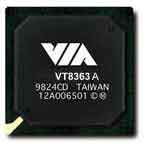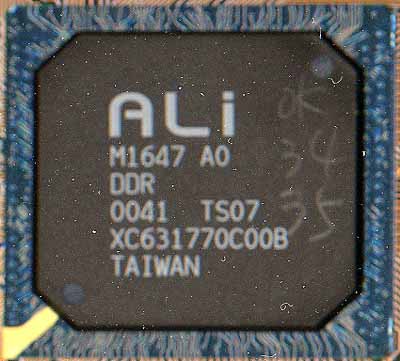Mobile Athlon 4 Notebooks & Chipsets
Since the processor being launched today is the mobile Athlon 4 we should probably talk about the notebooks that are going to be using the chip. Initially the Athlon 4 will be available in four speed grades: 850MHz, 900MHz, 950MHz and 1GHz all at 1.4V. These are all 200MHz FSB (100MHz DDR) parts. For power consumption and layout reasons there won't be any 266MHz FSB mobile Athlon 4s anytime soon.
Compaq has already announced and will be shipping notebooks based on the mobile Athlon 4 processor. These should already be in stores by publication. While no other manufacturers have announced yet we can expect notebooks from HP and probably Sony as well.

Currently there are only two chipsets that will be used with the mobile Athlon 4: the ALi MAGiK1 and the VIA KT133A. The MAGiK1, in spite of its DDR SDRAM support, is actually our least favorite of the two. As we noticed in our latest Socket-A Chipset Roundup, the MAGiK1 when coupled with the 200MHz FSB performed quite poorly. With DDR SDRAM it was even slower than the VIA KT133A with PC133 SDRAM. Interestingly enough, AMD chose the MAGiK1 to run their official battery life tests on instead of the KT133A (which they chose to run their official performance numbers on, can you guess why?). This leads us to believe that the MAGiK1 may consume less power than the KT133A. Other than the chipset difference both their performance and their battery life tests were conducted on identical systems.

The MAGiK1 will offer PC100/133 SDRAM and DDR SDRAM support while the KT133A will only offer PC100/133 SDRAM support since it has no DDR memory controller. Both of these chips are relatively large, and consume quite a bit of space on an extremely cramped mobile PCB.
The mobile Athlon 4 processor is packaged exactly the same as its upcoming workstation counterpart, meaning it is the same size as a current generation Athlon (Thunderbird). This combined with the fact that motherboard manufacturers have to make room for the chipset is going to unfortunately keep the Athlon 4 out of the thin and light notebooks initially.
This means that the only notebooks you're going to be able to find with the Athlon 4 at the start are desktop replacement units. There is definitely a market for these types of notebooks as they do garner over 40% of the market share, however thin and light notebooks are increasing in popularity and AMD will have to eventually roll out a different packaging in order to meet the needs of this market. AMD will most likely explore a BGA or micro PGA interface for future versions of the mobile Athlon 4.
Most of the Athlon 4 notebooks will have battery lives in the 3 - 3.5 hour range according to AMD using Ziff Davis Battery Mark as an indicator of battery life.










0 Comments
View All Comments